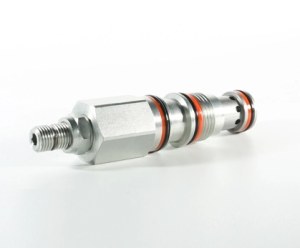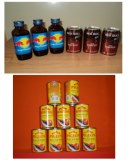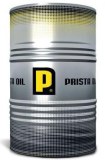A cross sequence valve is a type of hydraulic valve used to control the sequence of operations in a hydraulic system. It is designed to allow the flow of hydraulic fluid to a secondary circuit or actuator only when a predetermined pressure is reached in the primary circuit. Direct acting sequence valve are commonly used in hydraulic systems where specific operations need to occur in a predetermined sequence. They ensure that certain actions or functions take place only when the required pressure is reached, providing reliable and efficient control over the system's operation.
Direct Acting Sequence Valve For Sale
IRSDC-LBN Sequence Valve
This product permits the accurate timing and coordination of numerous actions or actuators in sequence, ensuring that everything functions in the correct order and avoids damage.
What Is A Sequencing Valve?
A sequencing valve, specifically a direct-acting sequence valve, is a type of hydraulic valve used to control the sequential operation of hydraulic actuators or cylinders in a hydraulic system. It ensures that specific actions occur in a predetermined order by controlling the flow of hydraulic fluid to the actuators.
Direct-acting sequence valves are widely used in applications where precise sequencing of hydraulic actuators is required. They are commonly found in machinery, manufacturing equipment, and systems that involve complex movements and coordinated operations.
How A Direct-Acting Sequence Valve Typically Works
Valve Structure
A direct-acting sequence valve consists of a valve body, a valve spool or poppet, and various ports for hydraulic fluid flow. The valve is typically spring-loaded.
01
Inlet and Outlet Ports
The valve has an inlet port that receives pressurized hydraulic fluid from a pump or another power source. It also has one or more outlet ports that are connected to the hydraulic actuators or cylinders.
02
Set Pressure
The valve is designed to open and allow fluid flow to the outlet ports once the pressure at the inlet port exceeds a specific pre-set pressure level. This pressure level is often adjustable and determines the sequencing order.
03
Pressure Differential
When the pressure at the inlet port surpasses the set pressure, it acts on the valve spool or poppet, overcoming the spring force and initiating valve movement.
04
Flow Diversion
As the valve opens, hydraulic fluid is allowed to flow to the outlet ports. This enables the actuator or cylinder connected to the first outlet port to begin its intended operation.
05
Sequential Operation
Once the actuator connected to the first outlet port completes its stroke or reaches its end position, the pressure at the outlet port decreases.
06
Valve Reset
As the pressure drops at the first outlet port, the spring force becomes stronger than the pressure force, causing the valve to close and redirect the hydraulic fluid flow to the subsequent outlet port.
07
Subsequent Actuators
The hydraulic fluid flow is then directed to the next outlet port, activating the second actuator in the predetermined sequence. This process continues until all the desired actuators have completed their strokes.
As a cartridge valve manufacturer, we provide screw in hydraulic cartridge valves, sequence valve in hydraulic system, pilot operated sequence valve, etc. For more about hydraulic sequence valve operation and sequence valve working, contact us.
Location : No. 03, 03rd Kechuang Road, Xinwu Economic Development Zone, Wanzhi District, Wuhu City, Anhui Province, China, 241100 Wuhu,
Contact : Xu William, 0553 8812880








